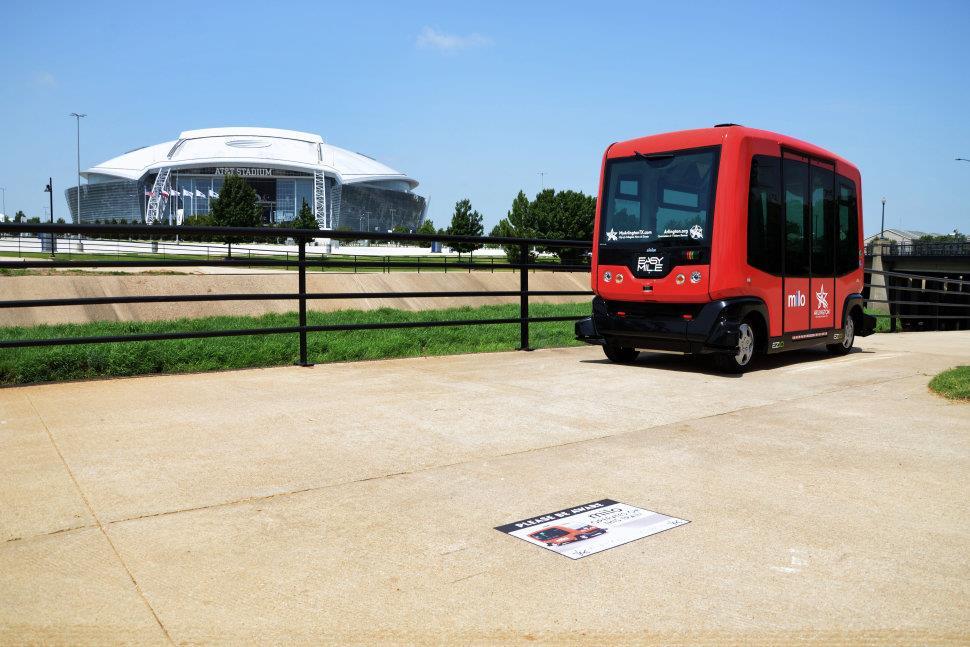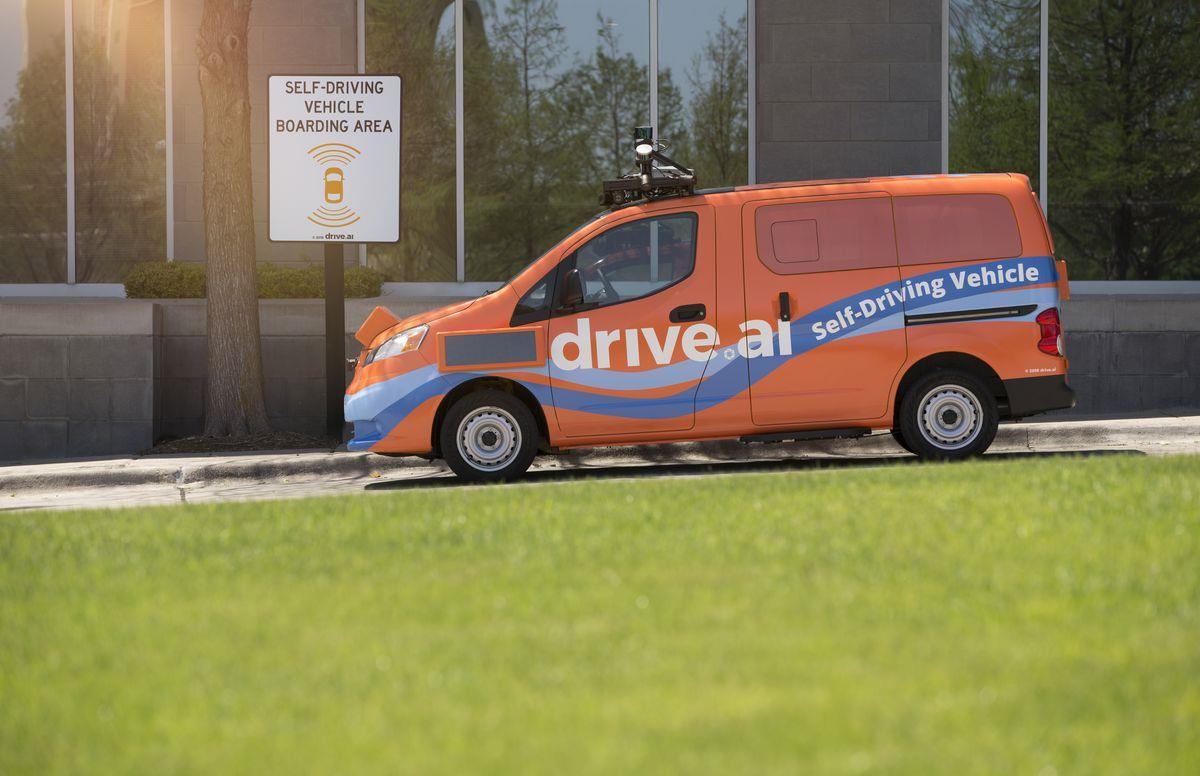
6 minute read
Future Technologies
The following subjects were identified as areas of interest. Presentations on the subjects are forthcoming.
Smart City
While “Smart Cities” is an increasingly popular topic, the term itself has been applied in a variety of ways. The term is typically understood as using data provided by sensors and other technology to improve, enhance, make more efficient, and/or automate the operations of a city.
FHWA describes a smart city as “a system of interconnected systems, including employment, health care, retail/entertainment, public services, residences, energy distribution, and not least, transportation. The system of systems is tied together by information and communications technologies (ICT) that transmit and process data about all sorts of activities within the city.”4
Connected and Autonomous Vehicles (CAV)
Connected vehicles communicate with each other, with other devices, and with the surrounding infrastructure. This is generally known as Vehicle-to-X or V2X. This communication enables vehicles to be aware of where other nearby vehicles are, and where they are headed5 . Drivers receive notifications and alerts, such as an impending red-light runner.
The development and deployment of autonomous vehicles is accelerating. While the concept is far from being accepted for full-scale deployment due to enormous technological, funding, and social hurdles, it is within the realm of possibility that dense urban settings may begin to support autonomous vehicles within the next 20 years. As testing and research move forward, the industry will begin to understand the infrastructure requirements. As with the connected vehicles, it is expected that autonomous vehicle infrastructure may need to be capable of huge amounts of data transfer. Although, whether these network services will be provided by public or private agencies remains to be seen.
Autonomous vehicles are also being tested both in the US and throughout the world. Texas is among the leaders in testing autonomous vehicles. The Texas Automated Vehicle (AV) Proving Ground Partnership consists of cities, regions, and research agencies throughout Texas that have partnered together to make Texas the nation’s first “Smart State6” .
4 https://www.its.dot.gov/itspac/Dec2014/Smart_Connected_City_FINAL_111314.pdf 5 https://www.its.dot.gov/cv_basics/index.htm 6 http://smartmobilitytexas.org/#regulations
Outside of the Texas Automated Vehicle (AV) Proving Ground Partnership, at least two autonomous services have started in the DFW Metroplex. The Milo system in Arlington uses low speed autonomous shuttles operating on sidewalks to move passengers between parking lots in the entertainment district to Texas Rangers and Dallas Cowboys games and events at Globe Life Field and AT&T Stadium.
Figure 3. Milo Autonomous Vehicle in Arlington Source: https://www.usnews.com/news/best-states/articles/2018-02-21/driverless-vehicles-hit-theroad-in-texas


Drive.ai operated a pilot program in Frisco, Texas to provide autonomous ride-hailing service between the Hall Office Park and the Star Complex. The Drive.ai vehicle does not require any V2I communications. The routes and pick up points are fixed. Drive.ai was acquired by Apple in June 20197 .
7 https://www.theverge.com/2019/6/25/18758820/drive-ai-self-driving-startup-shutting-down-apple

Figure 4. Drive.ai Autonomous Vehicle in Frisco, TX Source: https://www.vox.com/energy-and-environment/2018/5/8/17330112/self-driving-carsautonomous-vehicles-texas-drive-ai

Starting October 19, 20188, Drive.ai deployed 3 autonomous vehicles for a one-year pilot project in the City of Arlington’s entertainment district, the same area served by the Milo shuttle system which includes the Dallas Cowboys and Texas Rangers stadia. Unlike the Milo system, which operates on the sidewalk at walking speed, the Drive.ai vans will travel up to 35 miles per hour on city streets. The $435,000 project is being funded mostly ($343,000) by the federal government through the Congestion Mitigation Air Quality Improvement Grant.
Adaptive Traffic Control Systems (ATCS)
An adaptive traffic control system (ATCS) uses detection data and algorithms to dynamically adjust signal timing parameters to accommodate changing traffic patterns and demand. The dynamic changes to traffic signal timing are predictive in nature; adjustments are implemented in anticipation of changing traffic demand.
Characteristics of an ATCS include the following:
A central system processes data based on the adaptive algorithm The system is dependent on field detection of vehicles. Preference is detection by lane on each approach and sometimes departure of a signalized intersection
8 https://www.dallasnews.com/business/technology/2018/08/22/arlington-youcan-soon-request-autonomous-vehicle-demand
Coordination is performed with “near real time” signal timing adjustments typically using one of the following: o A traffic model that may be focused on optimizing multiple objective functions o Algorithms that seek to optimize degree of saturation o Algorithms that seek the minimization of queues, delays and stops Cycle and Non-Cycle based operations Variable adjustments to splits, cycle length, offsets, and groupings in near real time Adjustments are based on prediction of arriving traffic o Queues, size and approach of platoon, turn percentages, arrival time
While on-going ATCS operations do not require active input from engineers and technicians, adaptive systems are not “set-and-forget” systems. They require on-going monitoring and fine-tuning of critical detection and communications infrastructure to maintain a high level of performance. The level of maintenance often exceeds that of traditional time-based actuated-coordinated signal operations.
The following are the commercially available ATCS that have existing deployments in the United States. The developers and/or system integrators are also shown in the list.

ACDSS (Adaptive Control Decision Support System) by KLD Associates (in conjunction with TransCore) Centracs Edaptive by Econolite InSync by Rhythm Engineering Kadence by Kimley-Horn MAXTIME by Q-Free/Intelight (local adaptive control) QuicTrac by McCain SCATS (Sydney Coordinated Adaptive Traffic System) by New South Wales Provincial (distributed in North America by TransCore) SCOOT (Split Cycle Offset Optimization Technique) co-owned by Imtech, Siemens Traffic Controls Ltd., and TRL Ltd. Synchro Green by Trafficware Transparity Adaptive by McCain
The City of Tyler previously deployed ACS-Lite (Adaptive Control System Lite) by FHWA at multiple locations across the city. ACS-Lite relies on pre-determined signal timing plans and adjusts splits and offsets every few minutes, within the programmed cycle lengths. None of the previous ACS-Lite deployments are currently operational, for reasons unknown due to departures of prior City staff.
Automated Traffic Signal Performance Measures (ATSPMs) are transforming traffic signal operations and management by harnessing the power of big data. ATSPMs use high-
resolution controller data to provide detailed, real-time signal operation information, such as phase utilization, sufficiency of splits, arrivals on red/green, and turning movement counts. Compatible traffic signal controllers log signal event data across 255 enumerations every 100 milliseconds.
ATSPMs can be used to prioritize retiming efforts and directly measure signal performance, instead of relying on modeling techniques. They also can be used to support goals and objectives defined by an agency. Benefits of ATSPMs include increased safety, targeted maintenance, and improved operations.
The FHWA featured ATSPMs in the fourth round of Every Day Counts (EDC-4). As a result, agencies across the country are using ATSPMs to monitor and manage their traffic signals. ATSPM software solutions include an open-source platform developed by the Utah DOT and various vendor software packages.
Mobility as a Service

Mobility as a Service (MaaS) encompasses transportation options that are accessible ondemand, such as car- and bike-sharing9. MaaS also includes Transportation Network Companies (TNCs) such as Uber and Lyft. While MaaS has been viewed by some as a disruptor or replacement of transit services, it can also be used as first/last mile solution. In order to make this successful, it is key for agencies to partner with MaaS providers in their areas to serve unmet demand and set operating guidelines.
MaaS also intends to provide alternatives to private car usage. This can help communities reduce their carbon footprint and utilize more sustainable transportation options.
9 https://maas-alliance.eu/homepage/what-is-maas/



